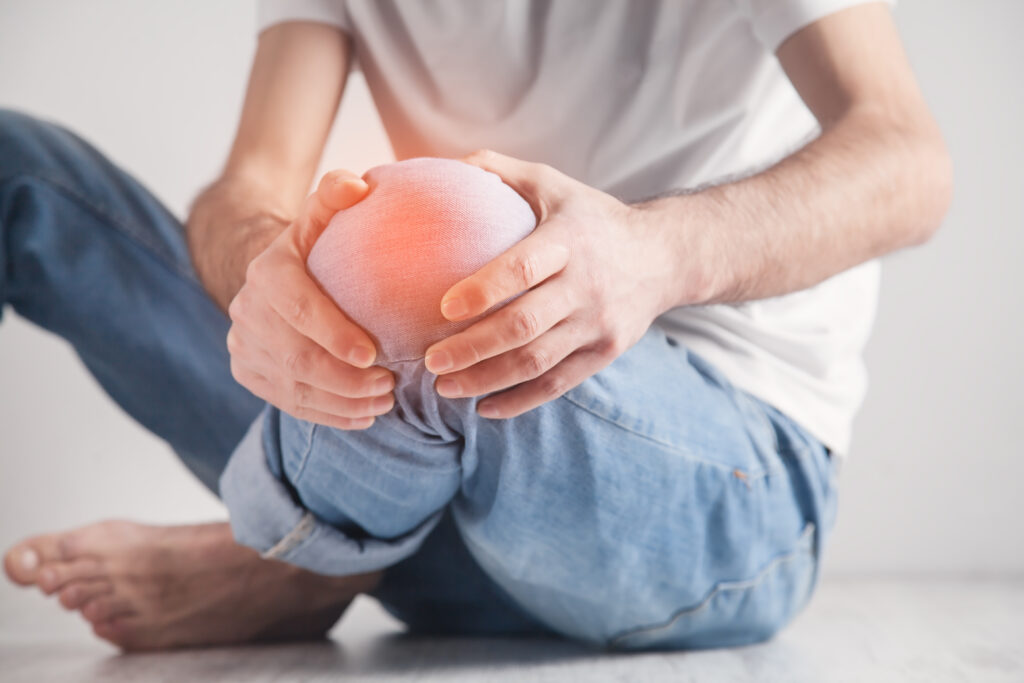If you're dealing with migraines in Calhoun, you might be wondering about effective ways to alleviate them. It's crucial to recognize that a combination of dietary adjustments, stress management techniques, and local resources can make a significant difference. By identifying your specific triggers and making mindful choices, you can start to take control. But what local options are available to support your journey? Exploring these avenues could lead to a more manageable lifestyle.
Understanding Migraines
Migraines are more than just bad headaches; they're complex neurological events that can disrupt your life in significant ways. When you experience a migraine, you're not just dealing with pain; you might also face nausea, sensitivity to light and sound, and even visual disturbances. These symptoms can make it hard for you to focus on daily tasks or enjoy activities you love.
The exact cause of migraines isn't fully understood, but research suggests that they involve changes in brain activity affecting nerve signals, chemicals, and blood vessels. This means that your brain is responding differently to various stimuli, leading to the debilitating symptoms you experience.
Migraines can vary in intensity and duration, lasting anywhere from a few hours to several days. You may also notice that migraines often come in phases. The prodrome phase might give you a heads-up with subtle changes, like mood swings or cravings, before the headache strikes.
Once the pain begins, it can be throbbing and may worsen with movement. The postdrome phase can leave you feeling drained and foggy, as if you've just run a marathon.
Understanding these phases and symptoms is essential for managing your migraines. Recognizing that they're more than just headaches can help you communicate more effectively with healthcare professionals and seek appropriate treatment.
Identifying Triggers
When trying to manage your migraines, identifying triggers is essential for finding relief. Triggers can vary from person to person, so it's important to pay attention to your body and the circumstances surrounding your migraines.
Start by keeping a detailed migraine diary. Record the date, time, duration, and intensity of each migraine, along with any activities, foods, or stressors you encountered before the onset. This will help you recognize patterns and pinpoint specific triggers.
Common triggers include certain foods, such as aged cheeses, chocolate, and caffeine. Be aware of your diet and how different items affect you.
Environmental factors can also play a significant role; bright lights, strong smells, and noisy settings can provoke migraines. If you notice a pattern, try to minimize your exposure to these stimuli.
Stress management is another important area to explore. High-stress levels can lead to tension headaches and migraines, so incorporating relaxation techniques, such as meditation or yoga, can be beneficial.
Additionally, don't overlook hormonal changes, which can trigger migraines in some individuals, particularly women during their menstrual cycles.
Sleep patterns are also important. Both oversleeping and lack of sleep can cause migraines, so aim for a consistent sleep schedule.
Local Treatment Options
For those seeking immediate relief from migraines, local treatment options can be quite effective. You might want to take into account over-the-counter medications like ibuprofen or acetaminophen, which can alleviate pain when taken at the onset of a migraine.
If you're experiencing more severe symptoms, triptans, which are prescription medications specifically designed for migraines, can offer significant relief. It's crucial to consult your healthcare provider to determine which option is best for you.
Another helpful approach is to apply cold or warm compresses to your head or neck. Many people find that a cold pack on their forehead helps numb the pain, while a warm compress can relieve tension in the neck and shoulders.
Experimenting with both options can help you find what works best.
Acupuncture has gained popularity as a local treatment for migraines, too. Many in Calhoun report positive experiences with this holistic approach, which may help reduce the frequency and intensity of migraine attacks.
If you're open to alternative therapies, think about seeking a qualified acupuncturist.
Additionally, regular massage therapy can ease muscle tension that may contribute to your migraines. A local massage therapist can help identify tight spots and relieve pressure through targeted techniques.
Finally, creating a calm environment during a migraine attack can make a significant difference. Dimming the lights, avoiding loud noises, and finding a comfortable position can help you cope better until the pain subsides.
Dietary Adjustments
Making dietary adjustments can play an essential role in managing migraines. What you eat can profoundly impact your headache frequency and intensity. Start by keeping a food diary to track what you consume and identify potential triggers. Common culprits include aged cheeses, processed meats, alcohol, and artificial sweeteners. By recognizing patterns, you can make informed choices about what to eliminate from your diet.
Incorporating more whole foods can also help reduce migraine occurrences. Focus on fruits, vegetables, whole grains, and lean proteins. Foods rich in magnesium, such as spinach, almonds, and avocados, may alleviate symptoms for some individuals. Staying hydrated is essential, too, as dehydration can trigger migraines. Aim for at least eight glasses of water a day, adjusting based on your activity level.
Regular meal times are important, as skipping meals can lead to blood sugar fluctuations, triggering headaches. Try to eat small, balanced meals throughout the day to maintain stable energy levels. If you suspect specific foods may be affecting you, consider an elimination diet under the guidance of a healthcare professional.
Lastly, don't overlook caffeine's role in your diet. While it can provide relief for some, excessive intake might lead to rebound headaches. Experiment to see how your body reacts to caffeine and adjust accordingly.
Stress Management Techniques
When it comes to managing migraines, stress management techniques can make a big difference.
Incorporating mindfulness, meditation, and deep breathing exercises into your routine helps you stay grounded and relaxed.
These practices not only reduce stress but also empower you to better handle migraine triggers.
Mindfulness and Meditation
Mindfulness and meditation are powerful tools for managing stress, which can greatly contribute to migraine triggers. When you practice mindfulness, you focus on the present moment, helping you become aware of your thoughts and feelings without judgment. This awareness can prevent stress from escalating and reduce the likelihood of a migraine.
To get started, find a quiet place where you won't be disturbed. Sit comfortably, close your eyes, and take a few deep breaths. As you breathe, pay attention to the sensations in your body and the rhythm of your breath. If your mind starts to wander, gently bring your focus back to your breathing. This simple act can help you regain control over your thoughts and emotions.
Set aside a few minutes each day for this practice. You might find it beneficial to try guided meditations available through apps or online resources. The more consistent you are, the more you'll notice the positive effects on your stress levels and overall well-being.
Incorporating mindfulness and meditation into your routine can empower you to manage stress effectively, reducing the frequency and intensity of migraines.
Deep Breathing Exercises
Deep breathing exercises can considerably reduce stress and help manage migraine triggers. When you practice deep breathing, you activate your body's relaxation response, which calms your mind and can alleviate headache symptoms.
Start by finding a quiet, comfortable space. Sit or lie down, and close your eyes. Take a slow, deep breath in through your nose, allowing your abdomen to rise. Hold that breath for a moment, then exhale slowly through your mouth. Aim to make your exhale longer than your inhale.
Repeat this cycle for several minutes. You might find it helpful to count your breaths to maintain focus, such as inhaling for a count of four, holding for four, and exhaling for six.
Integrate deep breathing into your daily routine, especially during stressful moments or when you feel a migraine approaching. Consistent practice can enhance your ability to cope with stress and reduce the frequency of your migraines.
Physical Therapy Solutions
Many people find physical therapy to be an effective approach for managing migraines. By targeting specific muscle groups and improving overall flexibility, physical therapy can help relieve tension that often triggers headaches. When you work with a physical therapist, they'll assess your posture, movement patterns, and any muscle imbalances contributing to your pain.
One technique you might encounter is manual therapy, which involves hands-on treatment to alleviate tightness and improve circulation in the neck and shoulders. This can greatly reduce the muscle tension that often leads to migraines.
Additionally, your therapist may introduce you to therapeutic exercises designed to strengthen weak muscles and enhance your range of motion. This not only helps in reducing the frequency of your migraines but can also improve your overall physical health.
Don't overlook the importance of education in your therapy sessions. Your physical therapist can provide you with valuable insights into body mechanics, helping you understand how to adjust your daily activities to prevent strain.
They might also teach you stretches and strengthening exercises that you can easily incorporate into your routine at home.
Finally, consistency is key. Attending regular sessions and committing to your home exercise program can make a considerable difference in your migraine management.
Community Support Resources
Finding community support resources can be a game changer for those dealing with migraines. Connecting with others who understand your struggles can provide both comfort and practical advice. In Calhoun, you'll find various local groups and online forums dedicated to migraine awareness and support.
Start by checking out local health organizations that often host support groups. These meetings offer a safe space to share experiences, coping strategies, and even treatment recommendations.
You might also discover workshops led by healthcare professionals focusing on migraine management techniques.
Social media can be another valuable tool. Look for Facebook groups or Instagram communities where migraine sufferers share their journeys. Engaging with these online platforms allows you to ask questions, seek advice, and find encouragement from people who get it.
Don't underestimate the power of local libraries or community centers. They frequently offer resources like pamphlets, books, or even guest speakers discussing migraines and related issues.
Additionally, consider reaching out to local health care providers. Many have recommendations for support groups or can connect you with others facing similar challenges.
Conclusion
By understanding your migraines and identifying triggers, you can take proactive steps to alleviate their impact in Calhoun. Make dietary adjustments, practice stress management techniques, and explore local treatment options to find what works best for you. Don't overlook the importance of community support—connecting with others can provide valuable insights and encouragement. Remember, you're not alone in this journey, and with the right strategies, you can manage your migraines more effectively.


